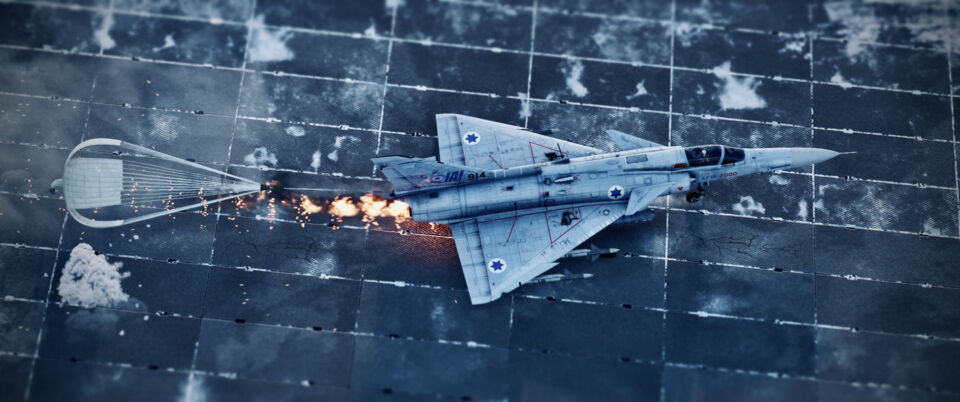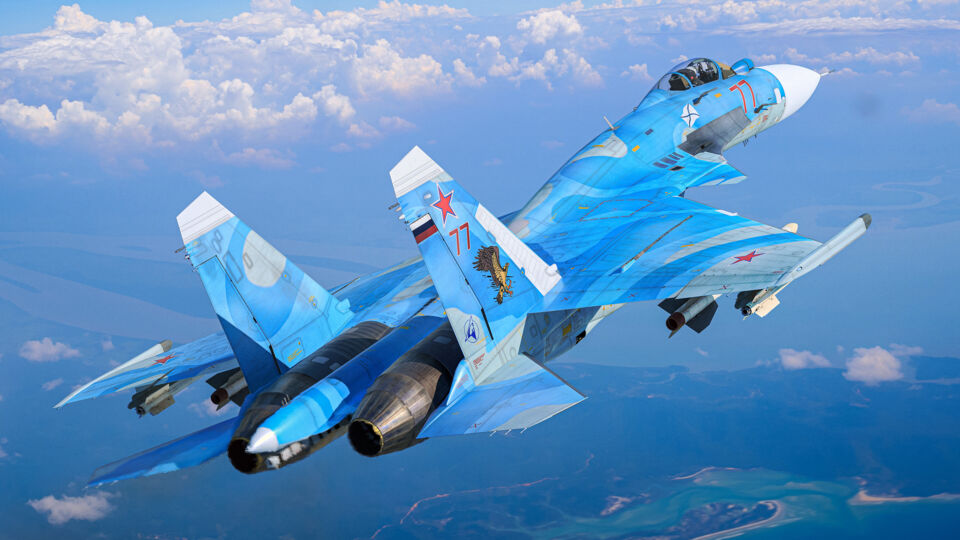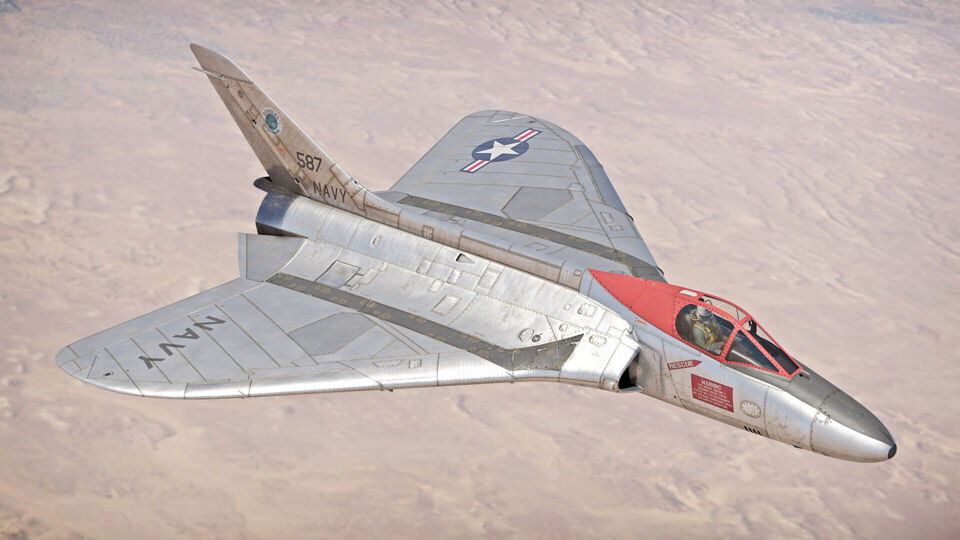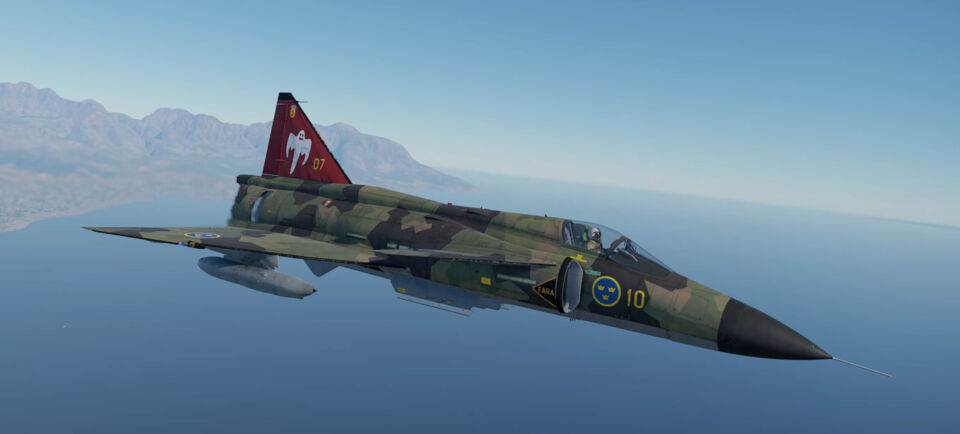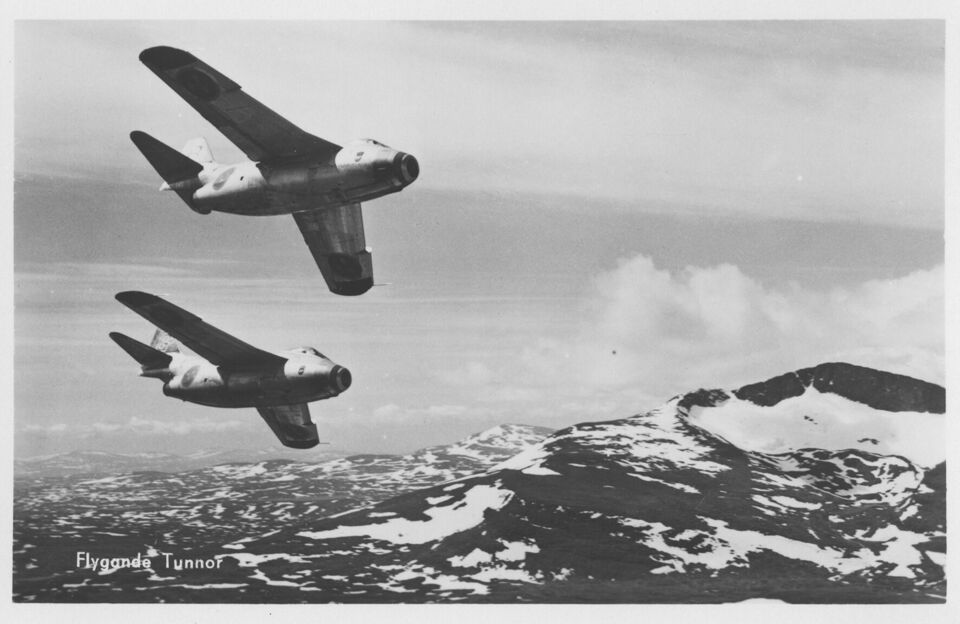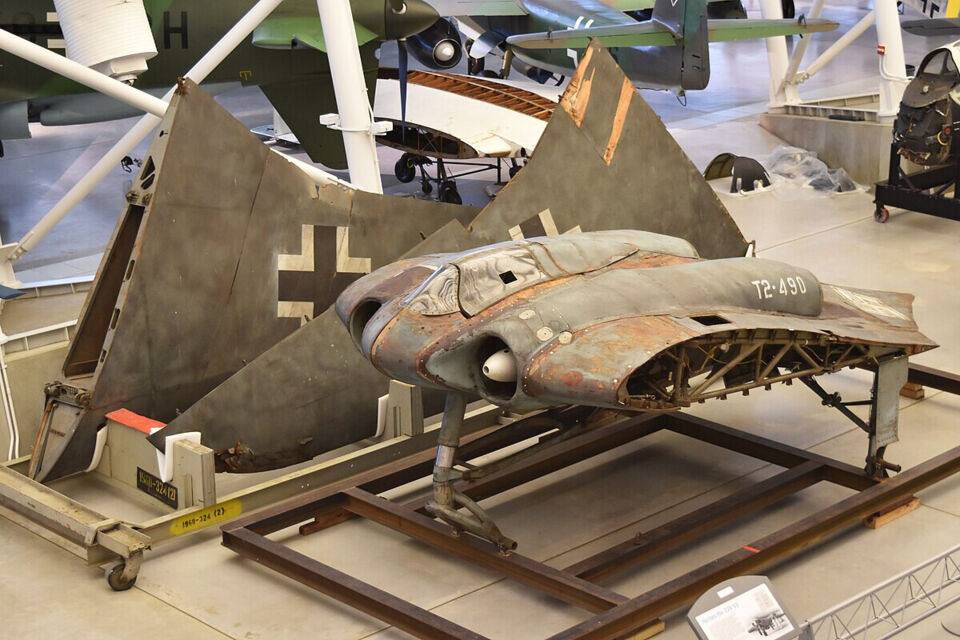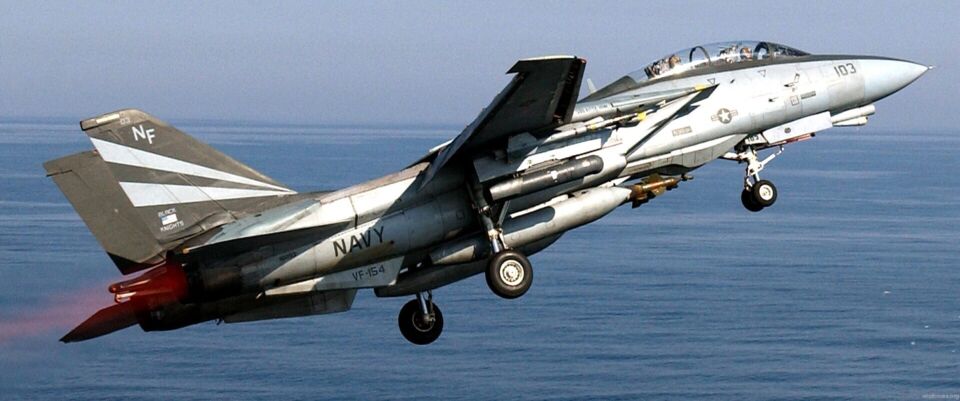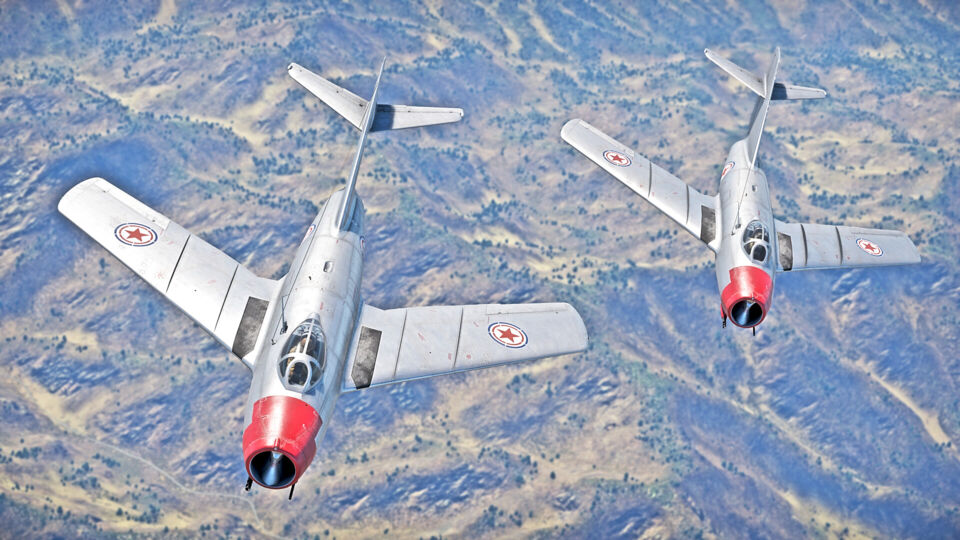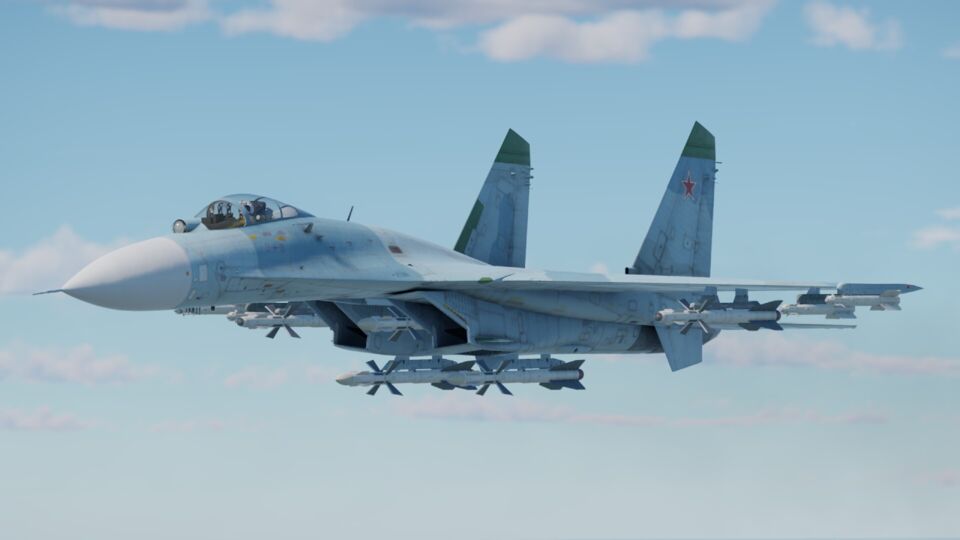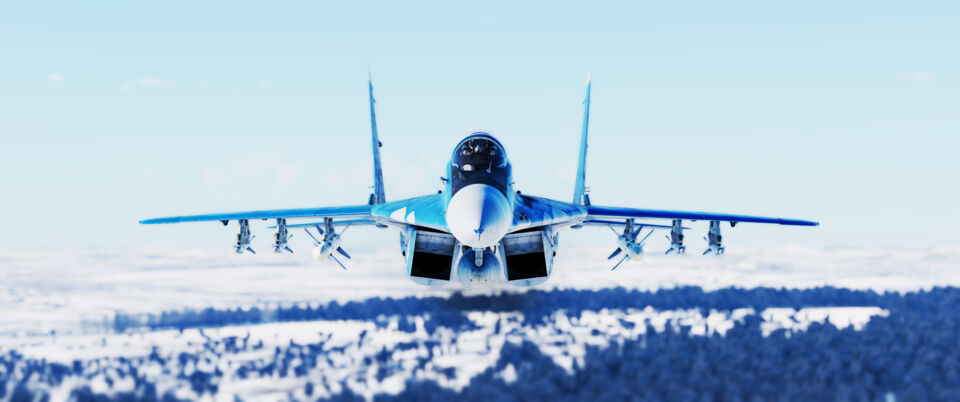#jets
The Kfir C.10 (Block 60) is a modernized variant of the Israeli Kfir multirole combat aircraft, which is in turn a derivative of the French Dassault Mirage 5. With the addition of four DERBY active radar-homing missiles and a top-of-the-line avionics suite, combined with the excellent airframe of the Kfir C.7, the Kfir C.10 is a force to be reckoned with in air battles, and it excels in medium to close range engagements. However, a small missile payload limits the Kfir C.10's ability to engage multiple targets simultaneously.
The Su-33 is a carrier-based air superiority fighter developed from the Su-27 to meet the needs of the Soviet Navy. It features reinforced landing gear, folding wings, an arrestor hook, and canards to improve low-speed handling during carrier operations. Designed for operations aboard the Admiral Kuznetsov, the Su-33 is optimized for long-range interception and high-maneuverability combat. Despite its increased weight, the Su-33 maintains decent maneuverability and is capable of employing a wide range of air-to-air missiles, making it one of the most capable carrier-based fighters of its era.
The F4D-1 is the only carrier-capable delta-winged fighter which was employed by the US Navy. The plane itself represents the era of early jet aviation when designers experimented with unusual solutions. In the game, the F4D-1 Skyray differs significantly from other jet fighters and aircraft with similar wings. Like the latter, it can turn sharply toward the enemy, and it carries good weapons. However, its low maximum speed is disappointing, and like other delta wings, it quickly loses energy. So, how do you play it?
The Swedish AJ37 Viggen is a strike aircraft boasting a deadly armament of missiles and guns, combined with an extremely powerful engine. In the hands of a good pilot, it can cause chaos on the ground forces below. It is a huge upgrade from the previous strike aircraft in the Swedish tech tree, the A32A Lansen, with much better capabilities including its weaponry, radar, RWR, and more.
The SAAB 29, commonly known as the "Flygande Tunnan" or "Flying Barrel", was Sweden's first mass-produced jet fighter. Developed in the aftermath of World War II as Europe's first swept-wing jet fighter, its remarkable performance, adaptability, and family of variants extended its operational life from the early 1950s into the late 1970s, and propelled Sweden to the forefront of jet fighter development in the years to come.
The Horten Ho 229, also known as the Gotha Go 229, was yet another German wonder weapon developed during World War II in an attempt to save Germany in the final months of the war. It is well known for its sleek, tailless design, minimizing drag and improving aerodynamics. It was one of the earliest jet-powered flying wing aircraft, designed to meet Hermann Göring’s “3 × 1000” requirement.
Did you know that the F-14A, the original variant of the legendary naval fighters, served with the U.S. Navy until 2004? Throughout its long and distinguished service, the F-14A underwent a series of significant upgrades that transformed it from a dedicated fleet air defense interceptor into a versatile multi-role fighter. This topic explores the key enhancements made to the A-model since 1977, tracing its evolution into a formidable platform with both potent air-to-air and precision air-to-ground capabilities.
The Soviet MiG-15 gained fame during the Korean War as the F-86 Sabre's most notable adversary. Its swept wing, powerful engine, and small size gave it a significant advantage over its outdated enemies and predecessors, such as the F-84 and MiG-9. Due to these characteristics, it was also used by Hungary, China, East Germany, and many other Soviet allies. In the game, the MiG-15 shines with its excellent maneuverability, energy retention, impressive climb rate, and strong airbrake—so useful when fighting Sabres. But are these characteristics offset by poor gun position, awful roll, and ineffective rudder?
The Su-27 is a fourth-generation Soviet fighter jet developed by the Sukhoi Design Bureau to achieve air superiority. It first took to the skies in 1977 and entered service in 1985. Created as a response to the American F-15 and F-14, the Su-27 was distinguished by its long range, high maneuverability, and ability to engage in air combat at both long and short ranges. It became the basis for further modifications, in particular the Su-30, Su-33, Su-34 and Su-35. The Su-27 is still in service in many countries and is considered one of the most successful developments of Soviet aircraft manufacturing.
The Romanian MiG-29 Sniper was a cancelled program to upgrade Romania’s fleet of MiG-29 Fulcrum aircraft with modern Western technology. These upgrades include the addition of a digital radar warning receiver and a modernized cockpit with colored MFDs and a western-style HUD. In the skies, the Sniper performs like its Soviet, Hungarian, and German counterparts, but it has the added advantage of being equipped with more modern avionics.
